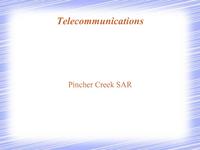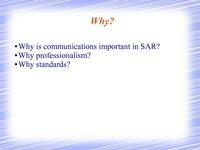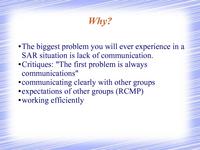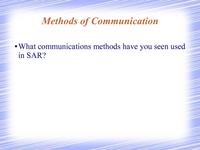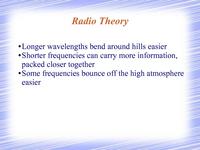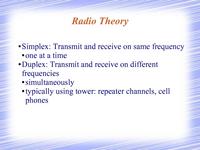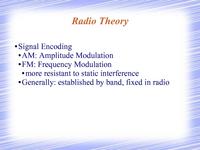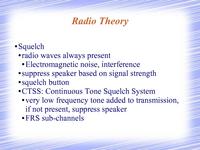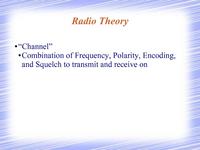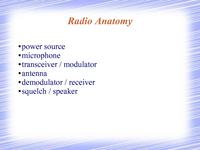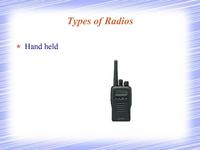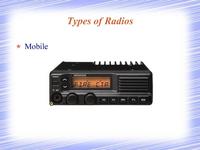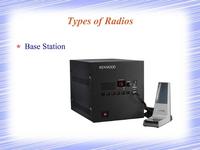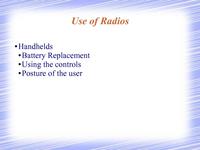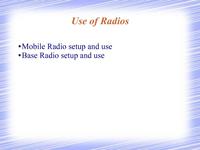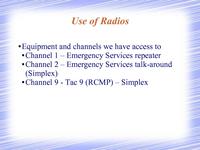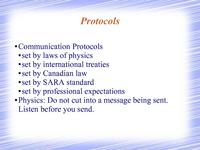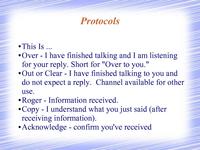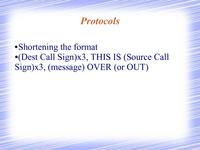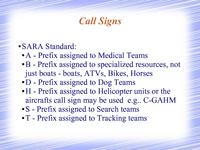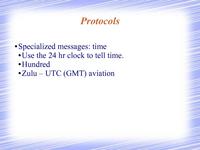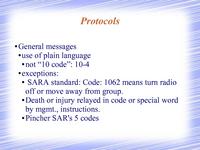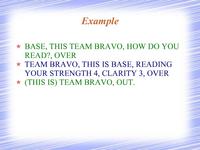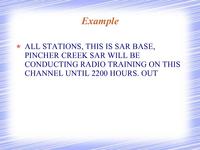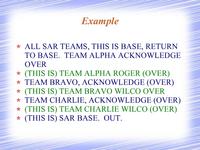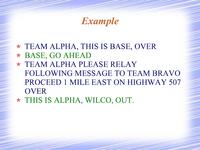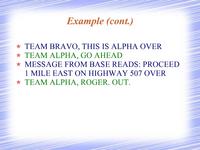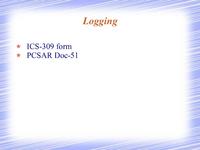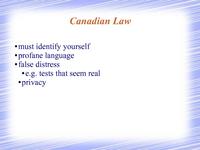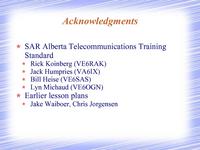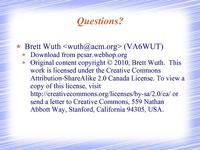SAR Fundamentals/Communications
From PCSAR
(→Time Plan) |
(→Time Plan) |
||
| Line 135: | Line 135: | ||
{{lesson slide|00:03|4 min}} | {{lesson slide|00:03|4 min}} | ||
[[Image:Communications-Lesson-Slides.pdf|page=2|200px|right]] | [[Image:Communications-Lesson-Slides.pdf|page=2|200px|right]] | ||
| + | [[Image:Communications-Lesson-Slides.pdf|page=3|200px|right]] | ||
* Why is communications important in SAR? | * Why is communications important in SAR? | ||
** The biggest problem you will ever experience in a SAR situation is lack of communication. | ** The biggest problem you will ever experience in a SAR situation is lack of communication. | ||
| Line 145: | Line 146: | ||
{{lesson slide|00:07|4 min}} | {{lesson slide|00:07|4 min}} | ||
| + | [[Image:Communications-Lesson-Slides.pdf|page=4|200px|right]] | ||
* What communications methods have you seen used in SAR? | * What communications methods have you seen used in SAR? | ||
** commercial radios | ** commercial radios | ||
| Line 152: | Line 154: | ||
** sat phone | ** sat phone | ||
** SPOT | ** SPOT | ||
| + | ** inReach | ||
** voice | ** voice | ||
** hand signals | ** hand signals | ||
| Line 158: | Line 161: | ||
{{lesson slide|00:11|3 min}} | {{lesson slide|00:11|3 min}} | ||
| + | [[Image:Communications-Lesson-Slides.pdf|page=5|200px|right]] | ||
* Basic Radio Theory | * Basic Radio Theory | ||
** all the wireless electronic communications methods are using radio waves | ** all the wireless electronic communications methods are using radio waves | ||
| Line 163: | Line 167: | ||
{{lesson slide|00:14|8 min}} | {{lesson slide|00:14|8 min}} | ||
| + | [[Image:Communications-Lesson-Slides.pdf|page=6|200px|right]] | ||
| + | [[Image:Communications-Lesson-Slides.pdf|page=7|200px|right]] | ||
| + | [[Image:Communications-Lesson-Slides.pdf|page=8|200px|right]] | ||
* Wavelength / Frequency | * Wavelength / Frequency | ||
** All radio transmissions have a wavelength | ** All radio transmissions have a wavelength | ||
| Line 180: | Line 187: | ||
{{lesson slide|00:22|3 min}} | {{lesson slide|00:22|3 min}} | ||
| + | [[Image:Communications-Lesson-Slides.pdf|page=9|200px|right]] | ||
* Power | * Power | ||
** Power is measured in Watts (W) | ** Power is measured in Watts (W) | ||
| Line 191: | Line 199: | ||
{{lesson slide|00:25|2 min}} | {{lesson slide|00:25|2 min}} | ||
| + | [[Image:Communications-Lesson-Slides.pdf|page=10|200px|right]] | ||
* Polarity | * Polarity | ||
** compare with polarized glasses | ** compare with polarized glasses | ||
| Line 197: | Line 206: | ||
{{lesson slide|00:27|3 min}} | {{lesson slide|00:27|3 min}} | ||
| + | [[Image:Communications-Lesson-Slides.pdf|page=11|200px|right]] | ||
* Signal Encoding | * Signal Encoding | ||
** AM: Amplitude Modulation | ** AM: Amplitude Modulation | ||
| Line 204: | Line 214: | ||
{{lesson slide|00:30|4 min}} | {{lesson slide|00:30|4 min}} | ||
| + | [[Image:Communications-Lesson-Slides.pdf|page=12|200px|right]] | ||
* Squelch | * Squelch | ||
** radio waves always present, but is it a real transmission? | ** radio waves always present, but is it a real transmission? | ||
| Line 216: | Line 227: | ||
{{lesson slide|00:34|1 min}} | {{lesson slide|00:34|1 min}} | ||
| - | + | [[Image:Communications-Lesson-Slides.pdf|page=13|200px|right]] | |
* "Channel" | * "Channel" | ||
** Combination of Frequency, Polarity, Encoding, and Squelch to transmit and receive on | ** Combination of Frequency, Polarity, Encoding, and Squelch to transmit and receive on | ||
| Line 222: | Line 233: | ||
{{lesson slide|00:35|1 min}} | {{lesson slide|00:35|1 min}} | ||
| + | [[Image:Communications-Lesson-Slides.pdf|page=14|200px|right]] | ||
* Anatomy of radio | * Anatomy of radio | ||
** power source | ** power source | ||
| Line 231: | Line 243: | ||
{{lesson slide|00:36|3 min}} | {{lesson slide|00:36|3 min}} | ||
| + | [[Image:Communications-Lesson-Slides.pdf|page=15|200px|right]] | ||
| + | [[Image:Communications-Lesson-Slides.pdf|page=16|200px|right]] | ||
| + | [[Image:Communications-Lesson-Slides.pdf|page=17|200px|right]] | ||
| + | [[Image:Communications-Lesson-Slides.pdf|page=18|200px|right]] | ||
* Types of radios | * Types of radios | ||
** ''show pictures'' | ** ''show pictures'' | ||
| Line 239: | Line 255: | ||
{{lesson slide|00:39|1 min}} | {{lesson slide|00:39|1 min}} | ||
| + | [[Image:Communications-Lesson-Slides.pdf|page=19|200px|right]] | ||
| + | [[Image:Communications-Lesson-Slides.pdf|page=20|200px|right]] | ||
| + | [[Image:Communications-Lesson-Slides.pdf|page=21|200px|right]] | ||
| + | [[Image:Communications-Lesson-Slides.pdf|page=22|200px|right]] | ||
| + | [[Image:Communications-Lesson-Slides.pdf|page=23|200px|right]] | ||
* Connectors & Mobile Antennas | * Connectors & Mobile Antennas | ||
** show pictures | ** show pictures | ||
{{lesson slide|00:40|8 min}} | {{lesson slide|00:40|8 min}} | ||
| + | [[Image:Communications-Lesson-Slides.pdf|page=24|200px|right]] | ||
| + | [[Image:Communications-Lesson-Slides.pdf|page=25|200px|right]] | ||
| + | [[Image:Communications-Lesson-Slides.pdf|page=26|200px|right]] | ||
* Use of radios | * Use of radios | ||
** Battery Replacement | ** Battery Replacement | ||
| Line 265: | Line 289: | ||
{{lesson slide|00:48|2 min}} | {{lesson slide|00:48|2 min}} | ||
| + | [[Image:Communications-Lesson-Slides.pdf|page=27|200px|right]] | ||
* Communication Protocols | * Communication Protocols | ||
** set by laws of physics | ** set by laws of physics | ||
| Line 274: | Line 299: | ||
{{lesson slide|00:50|1 min}} | {{lesson slide|00:50|1 min}} | ||
| + | [[Image:Communications-Lesson-Slides.pdf|page=28|200px|right]] | ||
* Professional expectations: | * Professional expectations: | ||
** Sound professional. Absolutely everyone is listening. | ** Sound professional. Absolutely everyone is listening. | ||
| Line 281: | Line 307: | ||
{{lesson slide|00:51|2 min}} | {{lesson slide|00:51|2 min}} | ||
| + | [[[[Image:Communications-Lesson-Slides.pdf|page=29|200px|right]] | ||
* Standard Words and Phrases | * Standard Words and Phrases | ||
* used internationally | * used internationally | ||
| Line 316: | Line 343: | ||
{{lesson slide|00:53|2 min}} | {{lesson slide|00:53|2 min}} | ||
| + | [[Image:Communications-Lesson-Slides.pdf|page=30|200px|right]] | ||
* Numbers | * Numbers | ||
** 3-Tree | ** 3-Tree | ||
| Line 326: | Line 354: | ||
{{lesson slide|00:55|12 min}} | {{lesson slide|00:55|12 min}} | ||
| + | [[Image:Communications-Lesson-Slides.pdf|page=31|200px|right]] | ||
| + | [[Image:Communications-Lesson-Slides.pdf|page=32|200px|right]] | ||
| + | [[Image:Communications-Lesson-Slides.pdf|page=33|200px|right]] | ||
| + | [[Image:Communications-Lesson-Slides.pdf|page=34|200px|right]] | ||
* Calling procedures | * Calling procedures | ||
** Treat like all your job is, is to pass on written messages. Think telegraph. | ** Treat like all your job is, is to pass on written messages. Think telegraph. | ||
| Line 344: | Line 376: | ||
{{lesson slide|01:07|6 min}} | {{lesson slide|01:07|6 min}} | ||
| + | [[Image:Communications-Lesson-Slides.pdf|page=35|200px|right]] | ||
| + | [[Image:Communications-Lesson-Slides.pdf|page=36|200px|right]] | ||
* Call Signs | * Call Signs | ||
* "All Stations" | * "All Stations" | ||
| Line 356: | Line 390: | ||
{{lesson slide|01:13|2 min}} | {{lesson slide|01:13|2 min}} | ||
| + | [[Image:Communications-Lesson-Slides.pdf|page=37|200px|right]] | ||
* Specialized messages: answers | * Specialized messages: answers | ||
** Affirmative / Negative | ** Affirmative / Negative | ||
| Line 361: | Line 396: | ||
{{lesson slide|01:15|2 min}} | {{lesson slide|01:15|2 min}} | ||
| + | [[Image:Communications-Lesson-Slides.pdf|page=38|200px|right]] | ||
* Specialized messages: time | * Specialized messages: time | ||
** Use the 24 hr clock to tell time. | ** Use the 24 hr clock to tell time. | ||
| Line 367: | Line 403: | ||
{{lesson slide|01:17|2 min}} | {{lesson slide|01:17|2 min}} | ||
| + | [[Image:Communications-Lesson-Slides.pdf|page=39|200px|right]] | ||
* Specialized messages: radio check | * Specialized messages: radio check | ||
* How Do You Read? | * How Do You Read? | ||
| Line 378: | Line 415: | ||
{{lesson slide|01:19|5 min}} | {{lesson slide|01:19|5 min}} | ||
| + | [[Image:Communications-Lesson-Slides.pdf|page=40|200px|right]] | ||
* Specialized messages: emergencies | * Specialized messages: emergencies | ||
** MAYDAY / PAN PAN / SECURITY | ** MAYDAY / PAN PAN / SECURITY | ||
{{lesson slide|01:24|8 min}} | {{lesson slide|01:24|8 min}} | ||
| + | [[Image:Communications-Lesson-Slides.pdf|page=41|200px|right]] | ||
| + | [[Image:Communications-Lesson-Slides.pdf|page=42|200px|right]] | ||
| + | [[Image:Communications-Lesson-Slides.pdf|page=43|200px|right]] | ||
| + | [[Image:Communications-Lesson-Slides.pdf|page=44|200px|right]] | ||
| + | [[Image:Communications-Lesson-Slides.pdf|page=45|200px|right]] | ||
| + | [[Image:Communications-Lesson-Slides.pdf|page=46|200px|right]] | ||
| + | [[Image:Communications-Lesson-Slides.pdf|page=47|200px|right]] | ||
* General messages | * General messages | ||
** use of plain language | ** use of plain language | ||
| Line 391: | Line 436: | ||
{{lesson slide|01:32|2 min}} | {{lesson slide|01:32|2 min}} | ||
| + | [[Image:Communications-Lesson-Slides.pdf|page=48|200px|right]] | ||
* Communications Traffic Logging | * Communications Traffic Logging | ||
** SARA Standard: log must be kept ICS-309 form | ** SARA Standard: log must be kept ICS-309 form | ||
| Line 396: | Line 442: | ||
{{lesson slide|01:34|3 min}} | {{lesson slide|01:34|3 min}} | ||
| + | [[Image:Communications-Lesson-Slides.pdf|page=49|200px|right]] | ||
* Canadian law | * Canadian law | ||
** must identify yourself | ** must identify yourself | ||
| Line 408: | Line 455: | ||
** Passing traffic | ** Passing traffic | ||
** Multiple Radio use simulation | ** Multiple Radio use simulation | ||
| + | {{lesson slide|01:36|}} | ||
| + | [[Image:Communications-Lesson-Slides.pdf|page=50|200px|right]] | ||
| + | [[Image:Communications-Lesson-Slides.pdf|page=51|200px|right]] | ||
| + | Questions | ||
{{lesson slides end}} | {{lesson slides end}} | ||
Revision as of 07:43, 18 November 2016
Contents |
Subject
What is this lesson plan about?
This lesson plan covers the material of SAR Alberta's Telecommunications Training Standard.
Authors
List who wrote this lesson plan.
Scope
What is included in this lesson, what's not and why.
- SAR Fundamentals Manual: Ch.14 "Communications"
- Basic SAR Skills Manual: F-4 "Communications"
- Exercise
This training should include:
- Why communications is important
- Why professionalism, why standards?
- communications methods used in SAR
- Basic radio theory
- Radio waves / light waves
- Frequency
- Bands
- VHF: 30 - 300 MHz: 10 m to 1 m
- UHF: 300MHz - 3 GHz: 1 m to 10 cm
- Bands
- CTCSS - continuous tone coded squelch system
- interference
- FRS sub channels
- Propagation (sara std field)
- Anatomy of radios (sara std field)
- Types of radios
- Base (sara std field)
- Hand Held (sara std field)
- Mobile (sara std field)
- Repeater (sara std field)
- Simplex vs Duplex (Repeater)
- Connectors & Mobile Antennas (sara std field)
- Use of radios
- Battery Replacement (sara std field)
- Using the controls (sara std field)
- Posture of the user (sara std field)
- Base Radio setup and use (sara std control)
- Equipment and channels we have access to
- Communication Protocols
- Do not cut into a message being sent. Listen before you send.
- choosing your words
- Sound professional. Absolutely everyone is listening.
- Make sure your information is clear, concise and short. Think before you speak, not during.
- Speak slow and clear.
- Use simple words.
- Standard Words and Phrases
- ITU Alphabet (sara std field)
- numbers
- 3-Tree 4-Fower 9-Niner
- Calling procedures (sara std field)
- Over - I have finished talking and I am listening for your reply. Short for "Over to you."
- Out or Clear - I have finished talking to you and do not expect a reply.
- Roger - Information received.
- Copy - I understand what you just said (after receiving information).
- Acknowledge - confirm you've received
- This Is ...
- Go Ahead
- Stand By
- Correction / I Say Again / Say Again
- Read Back / That Is Correct
- Wilco - Will Comply (after receiving new directions).
- Affirmative / Negative / Wilco
- Use the 24 hr clock to tell time.
- Radio check
- How Do You Read?
- Strength / Clarity
- 1 - (unreadable)
- 2 - (breaking up)
- 3 - (readable with difficulty)
- 4 - (readable)
- 5 - (perfectly readable)
- MAYDAY / PAN PAN / SECURITY
- Use of plain language (sara std field)
- One exception 10-62 means turn radio off or move away from group. (sara std field)
- PCSAR's codes
- Death or injury relayed in code or special word by mgmt., instructions.
- Call Signs
- All Stations
- Communications Traffic Logging (sara std control)
- Laws
- must identify yourself
- profane language
- false distress
- e.g. tests that seem real
- privacy
- Hands On use of radios
- Calling other stations (sara std field)
- Passing traffic (sara std field)
- Multiple Radio use simulation (sara std control)
Prerequisites
What should students already know/have accomplished before the lesson is presented.
Communications is such an important aspect of SAR, so please review the following material:
- □ Study Guide for Restricted Operator Certificate http://www.ic.gc.ca/eic/site/smt-gst.nsf/eng/sf01397.html
- □ SAR Fundamentals Manual: Ch.14 (pg 201)
- □ Basic SAR Skills Manual: Addendum 4 (pg F-9)
In particular:
- □ memorize the phonetic alphabet
- □ memorize the Procedural Words
- □ study the examples on how the Procedural Words are used
See Assigned reading
Objectives
At the conclusion of this lesson the participants:
- will meet the requirements of the SARA Telecommunications Training Standard
Time Plan
Total Time: 60 minutes
- 2013-02: 52 min
| Time | Material
|
|
00:00 3 min |
Introduce topic title Introduce Instructor Present Objectives |
|
00:03 4 min |
|
|
00:07 4 min |
|
|
00:11 3 min |
|
|
00:14 8 min |
|
|
00:22 3 min |
|
|
00:25 2 min |
|
|
00:27 3 min |
|
|
00:30 4 min |
|
|
00:34 1 min |
|
|
00:35 1 min |
|
|
00:36 3 min |
|
|
00:39 1 min |
|
|
00:40 8 min |
|
|
00:48 2 min |
|
|
00:50 1 min |
|
|
00:51 2 min |
[[
|
|
00:53 2 min |
|
|
00:55 12 min |
|
|
01:07 6 min |
|
|
01:13 2 min |
|
|
01:15 2 min |
|
|
01:17 2 min |
|
|
01:19 5 min |
|
|
01:24 8 min |
|
|
01:32 2 min |
|
|
01:34 3 min |
|
|
01:36
|
|
|
01:36
|
Questions |
See Plan (odt) (pdf)
Aids
What materials are needed or useful in presenting this lesson.
- Slides (download/print: .pdf; edit: .odp)
- FRS Radios
- PCSAR's portable radios
- Brett's portable ham radio
- Example of PCSAR's mobile radio
- computer projector
- laptop
- computer presentation slides
- for each student:
- phonetic alphabet (handout or in text book)
- hand-out:
- see sar/pc/training/subject/sar-fundamentals/components/subject/11-communications
- Phonetic alphabet
- Examples
- Exercise
- Study Guide for Restricted Operator Certificate
- Chapter 14 outline Jorgensen/Waiboer
Question bank
List of questions suitable for an review/exam of this section.
see Question bank
Frequently Asked Questions
What are some of the questions that students typically ask. Include the answers.
Q: How do external cell phone boosters work?
A: See http://en.wikipedia.org/wiki/Cellular_repeater
Feedback
When has this lesson been presented. What was the feedback.
- 2010-10-06 Wuth presentation to PCSAR. Projector did not work. Ran out of time for exercise.
- see msg Date: Thu, 28 Oct 2010 13:32:17 -0600
License
What can others do with this lesson?
Original content copyright © 2010-2013, Brett Wuth.
This work is licensed under the Creative Commons Attribution-ShareAlike 2.0 Canada License. To view a copy of this license, visit http://creativecommons.org/licenses/by-sa/2.0/ca/ or send a letter to Creative Commons, 559 Nathan Abbott Way, Stanford, California 94305, USA.
Acknowledgements
- SAR Alberta Telecommunications Training Standard
- Rick Koinberg (VE6RAK)
- Jack Humpries (VA6IX)
- Bill Heise (VE6SAS)
- Lyn Michaud (VE6OGN)
- Earlier lesson plans
- Jake Waiboer, Chris Jorgensen
Reference Material
If you need to cite sources, do so here.
- SAR Fundamentals Manual: Ch.14 (pg 201)
- Basic SAR Skills Manual: Ch.F-4 (pg F-9)
- Study Guide for Restricted Operator Certificate
- The 2009 SAR Alberta Telecommunications Standard
- GMRS on Wikipedia
Notes
Any additional notes, etc.
